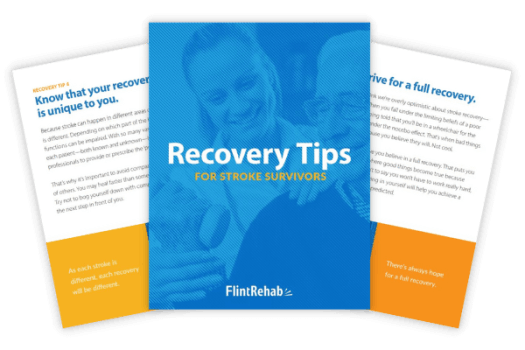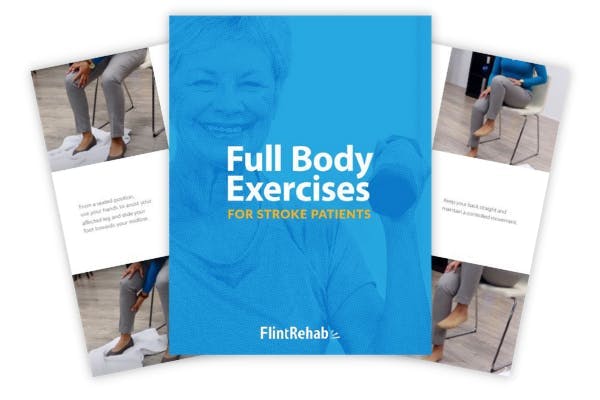No products in the cart.
No products in the cart.
No products in the cart.
No products in the cart.
Home » Neurological Recovery Blog » Stroke » Spontaneous Recovery After Stroke: What It Means and How to Encourage It
Last updated on August 3, 2023

Spontaneous recovery after stroke takes place when survivors experience a sudden improvement in symptoms and the return of lost functions. This occurs when the brain naturally repairs some of the damage it sustained due to the stroke.
Spontaneous recovery is usually seen within the first six months after stroke and relies on several repair mechanisms. Today’s article will explain how spontaneous recovery after stroke works as well as some helpful ways to support your brain’s natural repair mechanisms.
While there can be many different types of stroke, they can generally be placed in two categories: ischemic stroke and hemorrhagic stroke. Ischemic strokes are the most common type and occur when a blockage in one of the brain’s arteries leads to a lack of blood supply. Hemorrhagic strokes take place when a vessel ruptures, causing bleeding in the brain.
After an ischemic stroke, obstructed blood flow results in two distinct areas of tissue damage: the core and the penumbra. The core refers to the area of the brain directly affected by the stroke. This area of brain tissue is considered irreversibly damaged due to the lack of blood supply. However, the functions that were controlled by the core area can still return by activating neuroplasticity (more on this in a moment).
On the other hand, the penumbra, which is the area of the brain that surrounds the core, is damaged but this is not necessarily irreversible. This is the reason why fast action and quick treatment are crucial when someone exhibits stroke warning signs.
Following an ischemic stroke, blood flow to the penumbra is reduced, but this tissue is still salvageable if blood flow can be restored quickly. Initially, this area of the brain may not be able to perform its normal functions due to injury caused by the stroke. However, these functions can return as the penumbra heals. This is where spontaneous recovery comes in.
Spontaneous recovery after stroke refers to the brain’s innate ability to repair and salvage the penumbra. When this occurs, some functions (such as speech) might naturally return without any intervention.
When the penumbra was damaged, the functions of this area were impaired but may not be lost entirely. As the brain heals, it can regain those skills that seemed lost in the acute stages of stroke recovery. Next, let’s discuss how spontaneous recovery after stroke works and ways you can promote this during the rehabilitation journey.
There are three main mechanisms that can help promote spontaneous recovery after stroke. These three are reperfusion, edema management, and diaschisis reversal:
Diaschisis reversal is the most important part of spontaneous recovery. This neurological response is the reason why some of your abilities might suddenly return after stroke. As affected areas of the brain heal and neural activity increases, previously absent functions can return and improve.
Spontaneous recovery most often occurs during the acute and subacute stages of stroke rehabilitation, which usually last around six months. During this time, you can promote further recovery by taking advantage of your brain’s natural repair process, which we will discuss next.
While spontaneous recovery mostly occurs on its own, you can maximize your likelihood of regaining function by promoting your brain’s neuroplasticity. This refers to the brain’s ability to form new neural pathways or connections.
Neuroplasticity allows the brain to transfer functions that were once held in areas of tissue damage to new, healthy areas of the brain. You can help activate neuroplasticity through consistent, repetitive practice of therapeutic exercise and functional activities.
During the period when spontaneous recovery occurs, the brain also enters a heightened state of plasticity. This essentially means that neuroplasticity will operate on turbo-drive, and you can make incredible gains in a short amount of time.
Research shows that stroke patients who participate in rehab make fuller recoveries than those who do not, even though both might experience spontaneous recovery. Additionally, it is important to perform high repetition of rehab exercises to encourage the rewiring of new pathways between your brain and muscles.
Therefore, to enhance your recovery, do not just wait for your brain to heal on its own. Give it a boost by practicing stroke rehab exercises every day. You might just surprise yourself by how much progress you make.
As survivors transition out of the acute and subacute phases of recovery, the likelihood of spontaneous recovery after stroke diminishes. About six months after initial injury, plasticity will decrease and survivors often experience slowing progress. This can lead to a recovery plateau, where it might seem as though the progress you can make has already peaked.
In the past, it was thought that chances of recovering function after this six-month window were slim or even impossible. Today, however, research has shown that recovery can continue long after six months. That is because you can still activate neuroplasticity, even during a plateau.
It might take longer to see results than in the early stages, but recovery continues into the chronic stage. Plateaus in progress and even occasional regressions after stroke are a normal part of the recovery process. It is important to continue working toward your goals and taking small steps toward recovery. Even five and ten years after a stroke, patients can keep regaining abilities and improving overall function.
Therefore, if you have already passed the stage of spontaneous recovery after stroke, do not abandon your rehabilitation goals. If you persevere with your therapy, you can still see improvement in areas like strength, mobility, balance, and performance of daily tasks.
Spontaneous recovery is part of the brain’s natural healing process after stroke. Although the recovery timeline is unique for every stroke survivor, there is always hope for rewiring neural pathways and improving function due to neuroplasticity. Spontaneous recovery after stroke can help survivors regain both cognitive and physical abilities as the brain continues to heal.
In addition to spontaneous recovery after stroke, survivors can help increase gains in function and improve the likelihood of improvement by participating in consistent rehab exercise. While the greatest gains will likely be made in the first six months of recovery, there is always hope for improvement, no matter how long it has been since the initial stroke.
We hope this article has helped explain the mechanisms of spontaneous recovery after stroke and what survivors can do to encourage this. Even if your progress seems slow and tedious, persevering with therapy will help you recover more movement and cognitive function.

Get our free stroke recovery ebook by signing up below! It contains 15 tips every stroke survivor and caregiver must know. You’ll also receive our weekly Monday newsletter that contains 5 articles on stroke recovery. We will never sell your email address, and we never spam. That we promise.


Do you have these 25 pages of rehab exercises?
Get a free copy of our ebook Full Body Exercises for Stroke Patients. Click here to get instant access.
“My name is Monica Davis but the person who is using the FitMi is my husband, Jerry. I first came across FitMi on Facebook. I pondered it for nearly a year. In that time, he had PT, OT and Speech therapy, as well as vision therapy.
I got a little more serious about ordering the FitMi when that all ended 7 months after his stroke. I wish I hadn’t waited to order it. He enjoys it and it is quite a workout!
He loves it when he levels up and gets WOO HOOs! It is a wonderful product! His stroke has affected his left side. Quick medical attention, therapy and FitMi have helped him tremendously!”
FitMi is like your own personal therapist encouraging you to accomplish the high repetition of exercise needed to improve.
When you beat your high score or unlock a new exercise, FitMi provides a little “woo hoo!” as auditory feedback. It’s oddly satisfying and helps motivate you to keep up the great work.
In Jerry’s photo below, you can see him with the FitMi pucks below his feet for one of the leg exercises:
Many therapists recommend using FitMi at home between outpatient therapy visits and they are amazed by how much faster patients improve when using it.
It’s no surprise why over 14,000 OTs voted for FitMi as “Best of Show” at the annual AOTA conference; and why the #1 rehabilitation hospital in America, Shirley Ryan Ability Lab, uses FitMi with their patients.
This award-winning home therapy device is the perfect way to continue recovery from home. Read more stories and reviews by clicking the button below:
Grab a free rehab exercise ebook!
Sign up to receive a free PDF ebook with recovery exercises for stroke, traumatic brain injury, or spinal cord injury below: